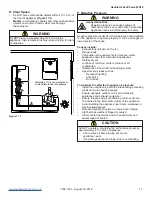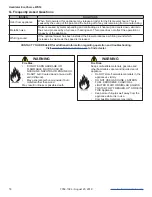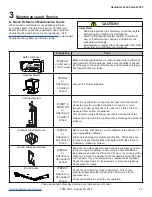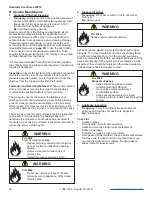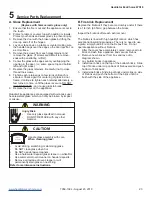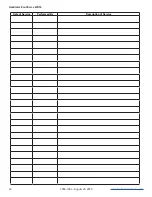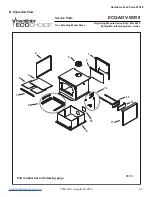
7056-138L • August 23, 2019
28
Heatilator EcoChoice WS18
www.heatilatorecochoice.com
D. Tools And Supplies Needed
Before beginning the installation be sure the following tools
and building supplies are available:
- Reciprocating saw
-
Framing material
- Pliers
- High temp caulking material
- Hammer
- Gloves
- Phillips screwdriver
-
Framing square
-
Flat blade screwdriver
- Electric drill and bits
- Plumb line
-
Safety glasses
-
Level
- Tape measure
- Misc. screws and nails
-
7/16 socket or wrench
-
1/2-3/4 in. length, #6 or #8 self-drilling screws
• Remove appliance and components from packaging
and inspect for damage.
• Report to your dealer any parts damaged in shipment.
• Read all the instructions before starting the
installation. Follow these instructions carefully
during the installation to ensure maximum safety
and benefit.
E. Inspection of Appliance and Components
C. Negative Pressure
Negative pressure results from the imbalance of air
available for the appliance to operate properly. It can be
strongest in lower levels of the house.
Causes include:
• Exhaust fans (kitchen, bath, etc.)
• Range hoods
• Combustion air requirements for furnaces, water
appliances and other combustion appliances
• Clothes dryers
•
Location of return-air vents to furnace or air
conditioning
•
Imbalances of the HVAC air handling system
•
Upper level air leaks such as:
- Recessed lighting
- Attic hatch
- Duct leaks
To minimize the effects of negative air pressure:
•
Install optional outside air kit with the intake facing
prevailing winds during the heating season
• Ensure adequate outdoor air for all combustion
appliances and exhaust equipment
• Ensure furnace and air conditioning return vents are
not located in the immediate vicinity of the appliance
• Avoid installing the appliance near doors, walkways or
small isolated spaces
• Recessed lighting should be a “sealed can” design
• Attic hatches weather stripped or sealed
• Attic mounted duct work and air handler joints and
seams taped or sealed
• Basement installations should be avoided
WARNING
Asphyxiation Risk.
• Negative pressure can cause spillage
of combustion fumes, soot and
carbon monoxide.
• Appliance needs to draft properly for
safety.




